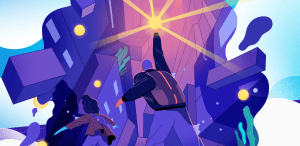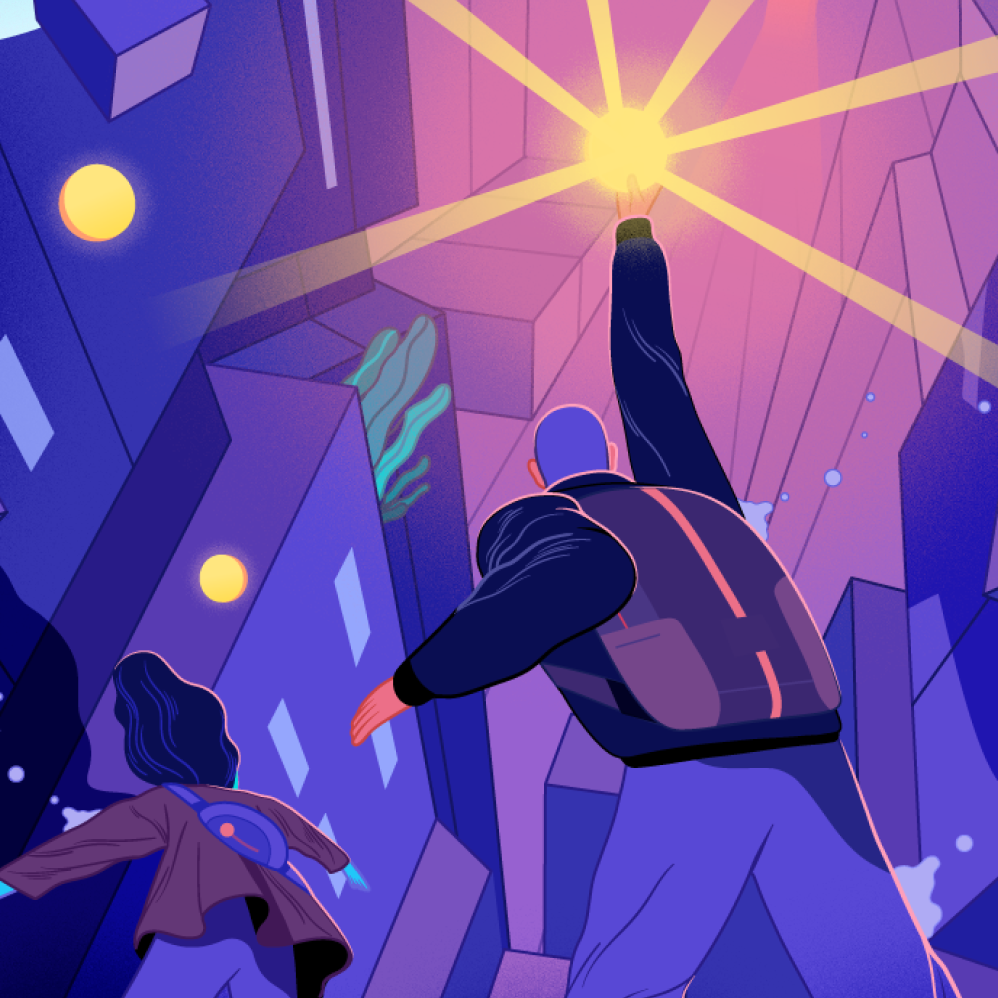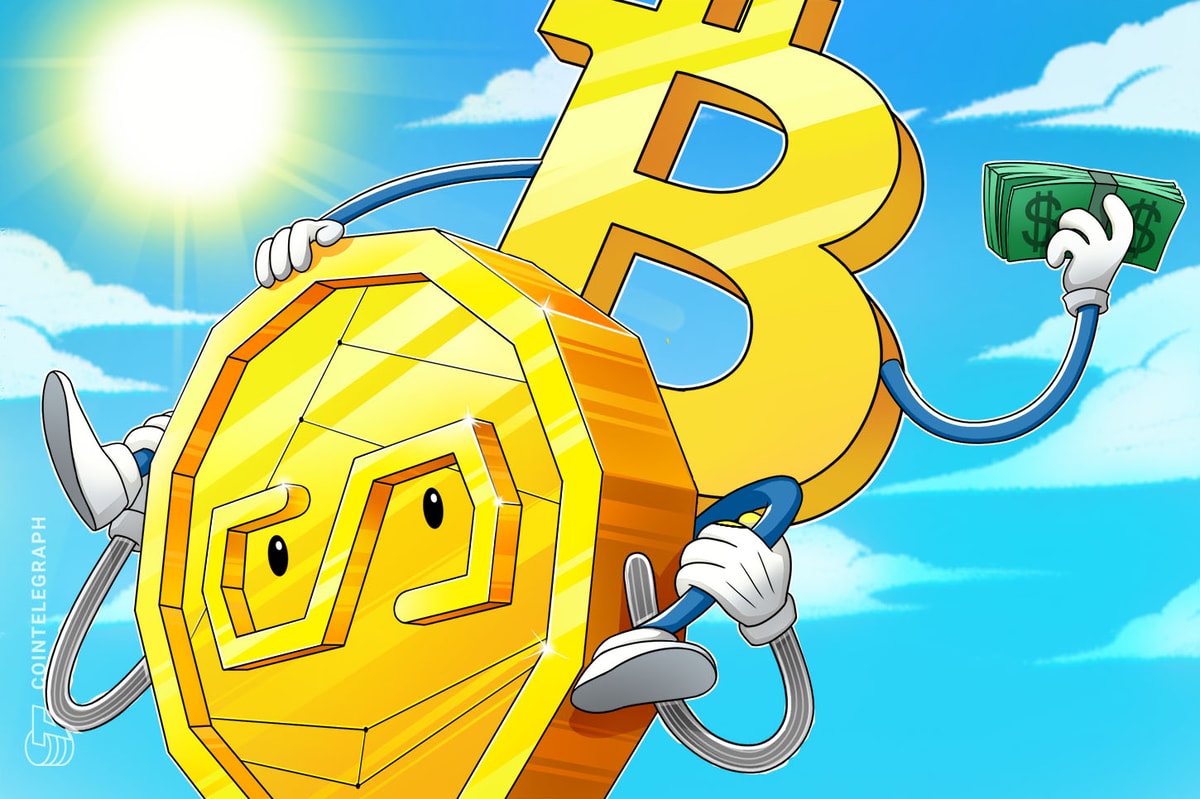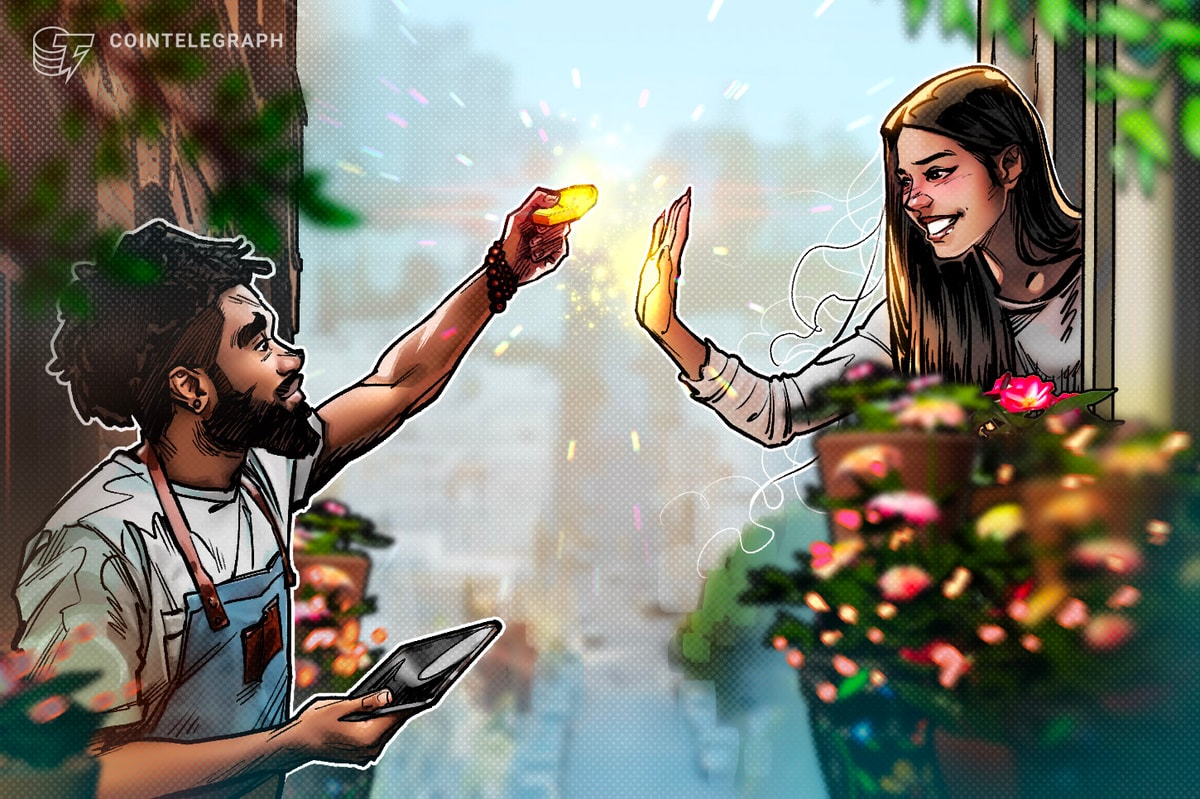
For the uninitiated or crypto-curious people out there, non-fungible tokens (NFTs) represent one of the more colorful sectors of the cryptocurrency industry.
How is it that seemingly duplicable, oftentimes wacky pieces of digital artwork can fetch extraordinarily high prices, and why are people flocking to buy these intangible items?
It’s certainly a difficult topic to get your head around, but let’s give it a try.
What exactly is an NFT again?
First off, it’s important to point out that when you purchase an NFT, what you’re actually buying is a digital token that simply points to a specific computer file that exists somewhere else on the internet.
This can be anything from a music file to an in-game costume or a cartoon animal picture.
Think of it as a digital deed to a plot of land. The deed represents ownership of that particular property but, in real terms, the deed is not the plot itself.
Similarly, the NFT is NOT the digital item itself.
So, while it may seem like it’s all one thing, there are actually two separate components involved.
- The digital item itself (a picture of a cartoon ape, a GIF of an animated cat with a Pop-Tart torso, etc.)
- The non-fungible digital token that contains unique identifying metadata that points to the above item, i.e. File location, item name, unique traits, contract address, etc.
An NFT is simply a tradable digital token that stores important metadata (digital information) pertaining to the associated digital item. This information is unique such that even if you were to screenshot or duplicate the intended file and mint a new NFT to represent it, it would contain different metadata and therefore it would be easy to identify which one was the original and which one was a copy.
Just as you can’t “copy” a piece of real estate that a deed describes, you can’t just copy the digital object that an NFT describes. Sure, you can take a picture of a plot of land or right click on a funny cat NFT, but the object the NFT relates to stays the same.
This ease of authentication is thanks to the immutable, transparent, free-for-all-to-see nature of blockchain technology on which all NFT tokens are stored.
When you buy an NFT, data that says that specific digital token which is linked to that specific item is linked to your specific crypto wallet address is stored on the blockchain as part of the transaction. If you choose to sell the NFT, the blockchain data is updated to reflect the new owner’s crypto wallet address.
With that refresher in mind, back to what you own.
What do you really own when you buy an NFT?
The ownership part of NFTs isn’t as straightforward as you might think.
On one hand, when you buy an NFT you are essentially buying a token that gives you bragging rights so that you can tell everybody “there might be hundreds of copies of this digital picture on the internet, but I own the original one and here’s the immutable evidence (in the form of a unique digital token) to prove it.”
But on the other hand, while you may be the “owner” of an original digital item, that doesn’t necessarily mean you have any rights concerning that item, to say, use it as a business logo or create and sell memorabilia based off of it. Oftentimes, those intellectual property rights remain with the person or people who first created the item, but this often differs by NFT collection.
That isn’t to say there aren’t NFTs that do grant open license usage, because there are plenty. It’s just that most of the time, unless expressly mentioned by the creator, buyers shouldn’t just assume these rights are automatically handed over upon sale.
So, in short, what you own is a digital token that immutably points to an original digital item that gives you the exclusive right to sell it on. Beyond that, holders of certain NFT collections such as Bored Apes Yacht Club (BAYC) have found ways of increasing utility by establishing their own exclusive communities. These private channels allow like-minded people to share ideas, information, and receive perks like early access to new NFT drops.
Advances in DeFi protocols also means holders can now rent their NFTs to others in some instances.
What happens if the digital file is deleted?
If you only own the NFT and not the digital file itself, then what would happen if the original creator decided to wipe the file, or it got accidentally deleted?
This is one of the major drawbacks of NFTs right now. In a rush to capitalize on the surging NFT trend, many creators fail to adequately secure their NFT data. That means if that data gets lost or corrupted, the NFT will point to nothing and be rendered worthless.
A recent example of this is the widespread loss of many NFTs minted on the now-defunct FTX exchange. Instead of hosting NFT data using a decentralized, blockchain-based storage solution like Storj or Sia, FTX hosted them on FTX US servers which are now no longer operational. As a result, affected NFTs no longer link to their original files, but instead, direct users to an FTX webpage that outlines the company’s insolvency. Unfortunate events like this re-illustrate the importance of decentralized NFT metadata storage and will hopefully set new standards for collections going forward.
Learning how NFTs work now will help you navigate the future of the metaverse and digital ownership. Many wager that we could eventually end up buying and selling digital goods in the same way we sell physical ones. After all, we will still need cool shoes, t-shirts, and jewelry whether we’re hanging out in a real bar or a virtual one.









 Bitcoin
Bitcoin  Ethereum
Ethereum  Tether
Tether  XRP
XRP  Solana
Solana  USDC
USDC  Dogecoin
Dogecoin  TRON
TRON  Cardano
Cardano  Lido Staked Ether
Lido Staked Ether  Wrapped Bitcoin
Wrapped Bitcoin  Hyperliquid
Hyperliquid  Sui
Sui  Wrapped stETH
Wrapped stETH  Chainlink
Chainlink  LEO Token
LEO Token  Avalanche
Avalanche  Stellar
Stellar  Bitcoin Cash
Bitcoin Cash  Toncoin
Toncoin  Shiba Inu
Shiba Inu  USDS
USDS  Hedera
Hedera  WETH
WETH  Litecoin
Litecoin  Wrapped eETH
Wrapped eETH  Monero
Monero  Binance Bridged USDT (BNB Smart Chain)
Binance Bridged USDT (BNB Smart Chain)  Polkadot
Polkadot  Ethena USDe
Ethena USDe  Bitget Token
Bitget Token  Pepe
Pepe  Coinbase Wrapped BTC
Coinbase Wrapped BTC  Pi Network
Pi Network  WhiteBIT Coin
WhiteBIT Coin  Aave
Aave  Uniswap
Uniswap  Dai
Dai  Ethena Staked USDe
Ethena Staked USDe  Bittensor
Bittensor  OKB
OKB  Cronos
Cronos  BlackRock USD Institutional Digital Liquidity Fund
BlackRock USD Institutional Digital Liquidity Fund  Aptos
Aptos  NEAR Protocol
NEAR Protocol  Jito Staked SOL
Jito Staked SOL  Internet Computer
Internet Computer  Ethereum Classic
Ethereum Classic  sUSDS
sUSDS